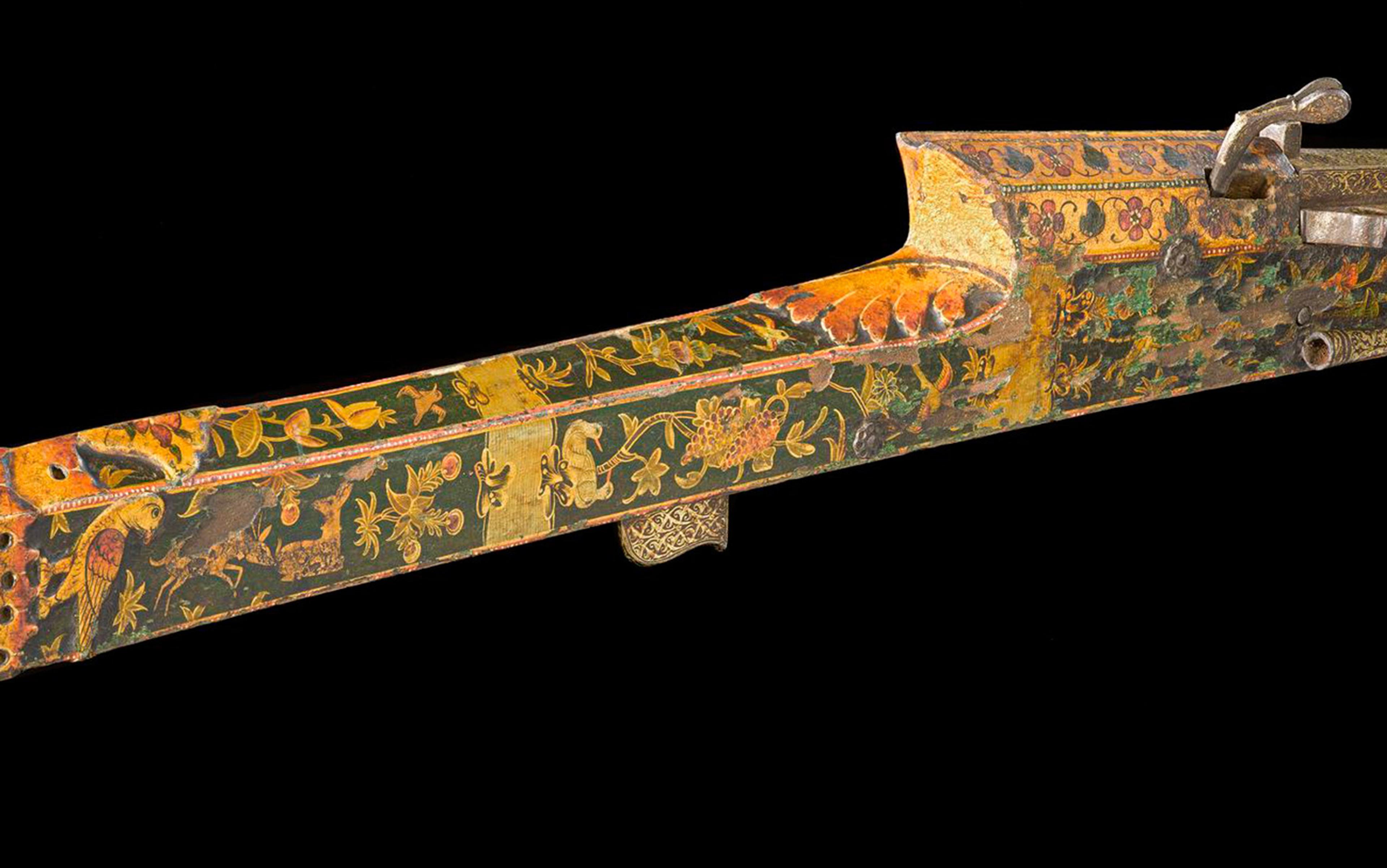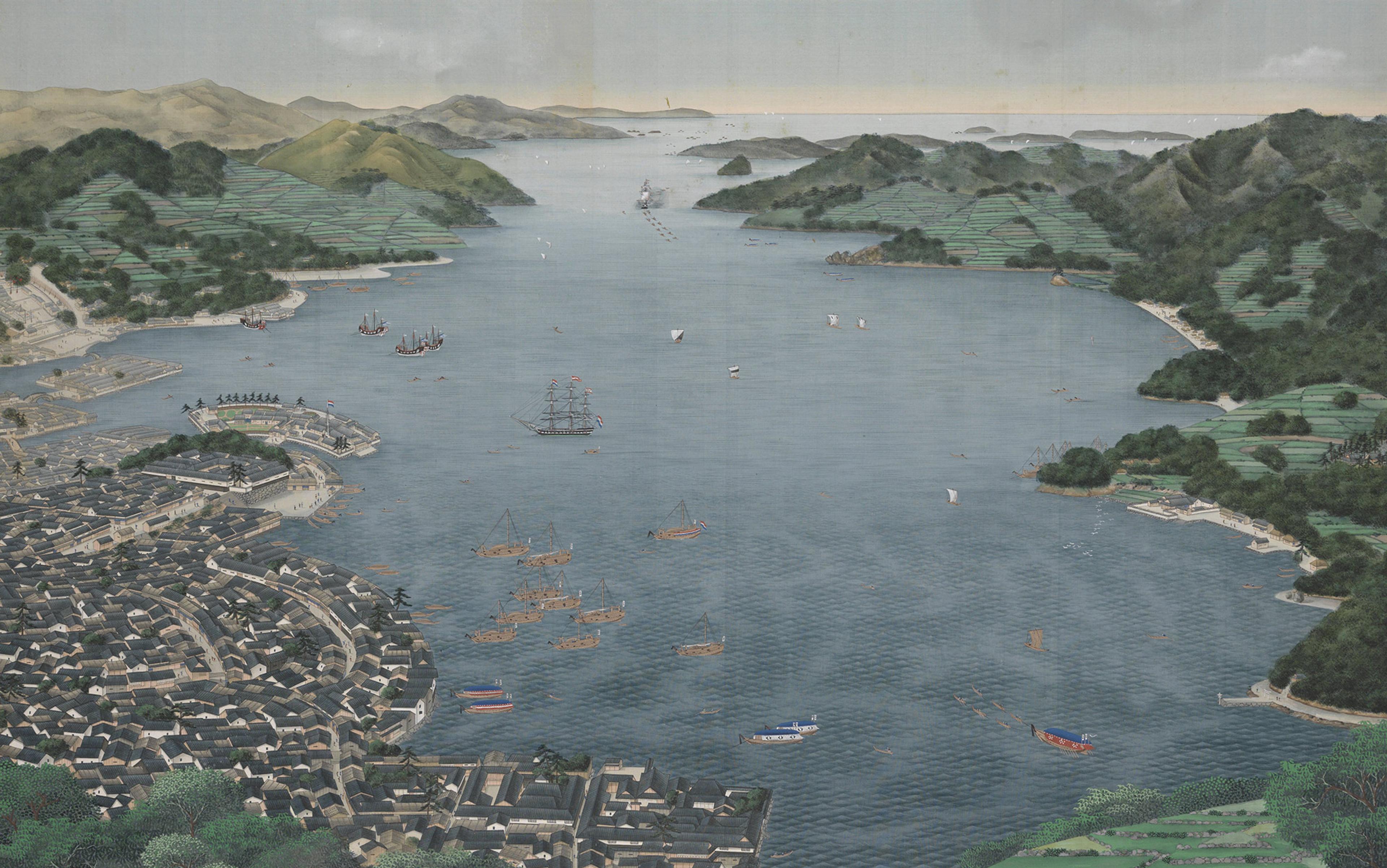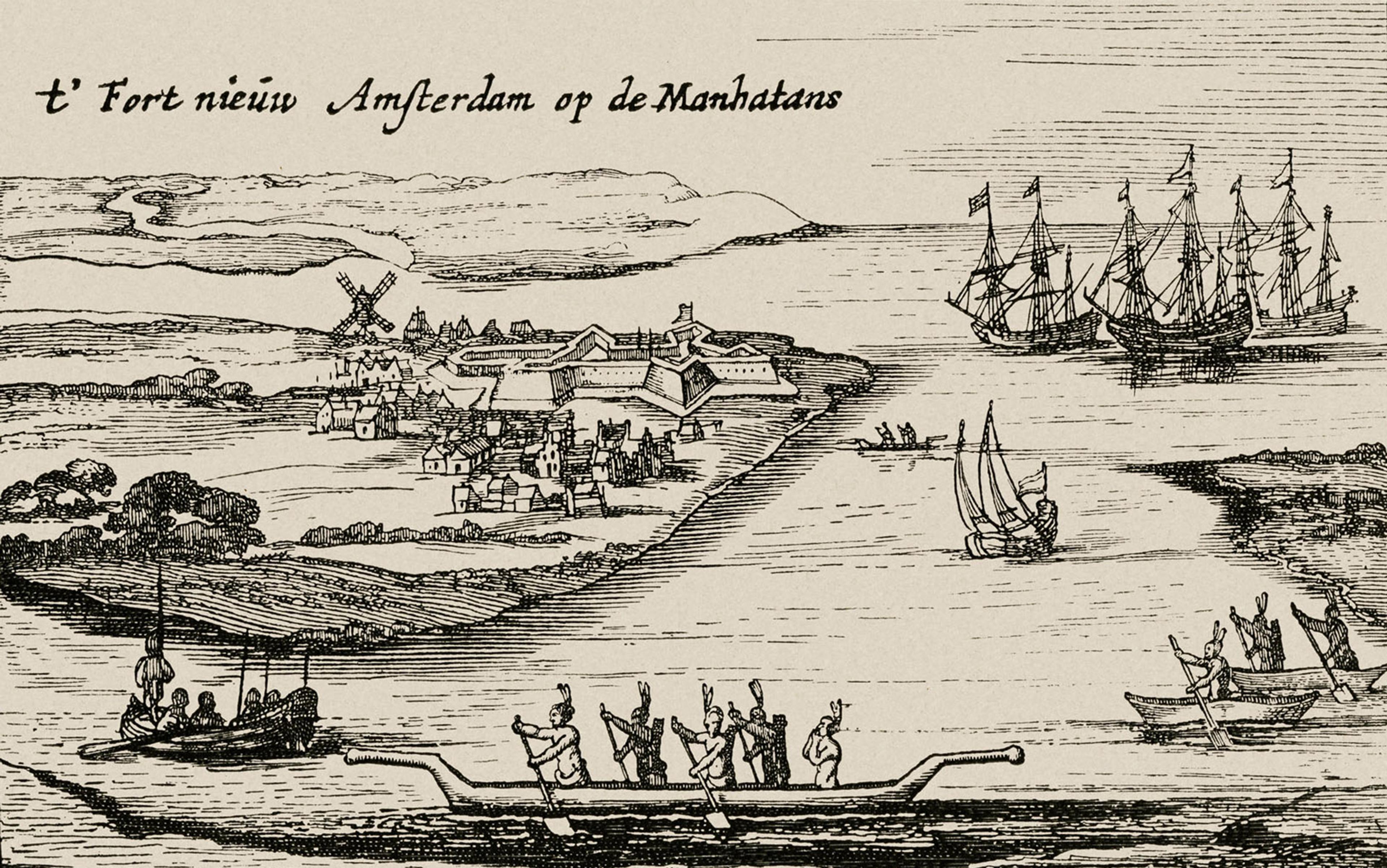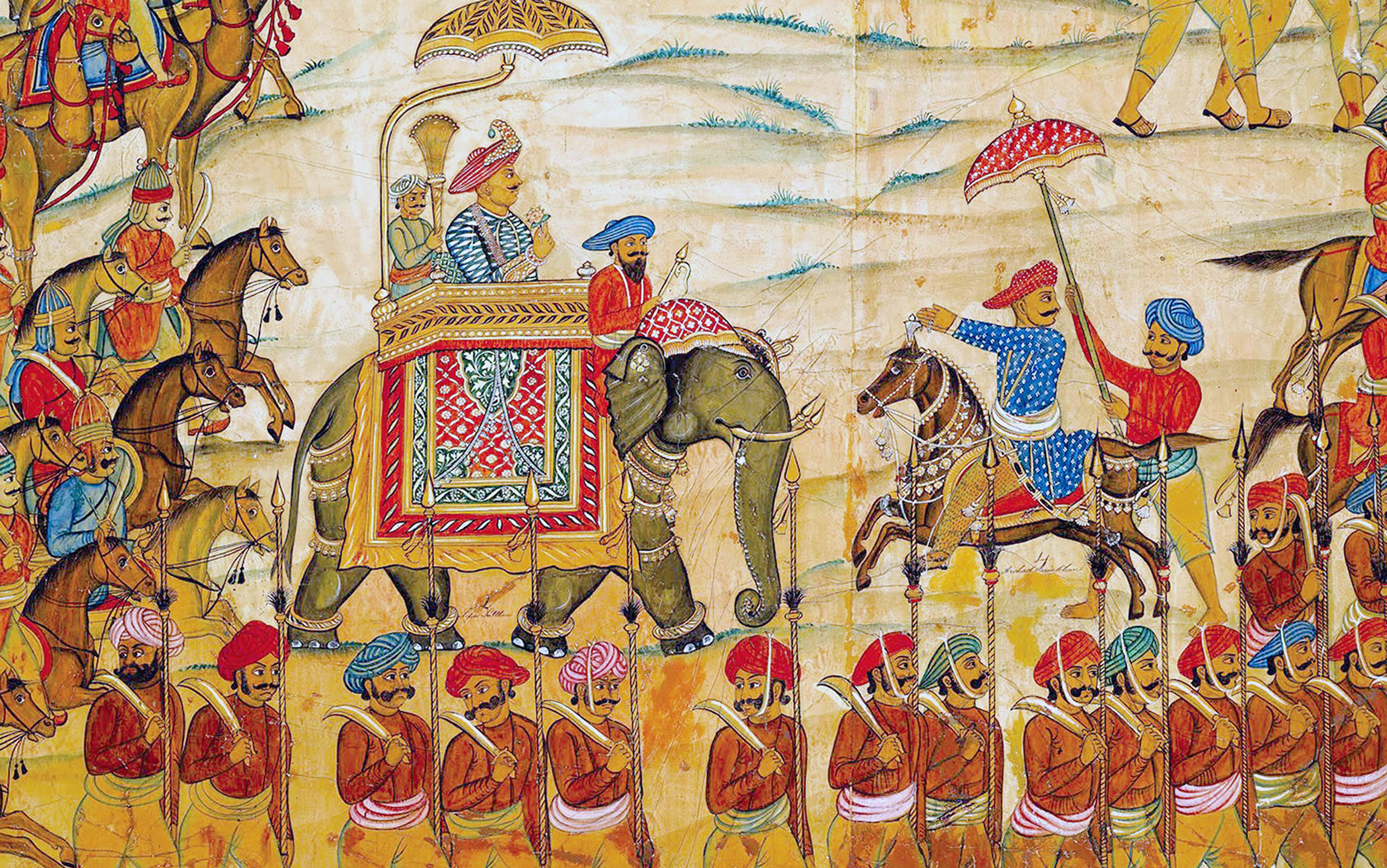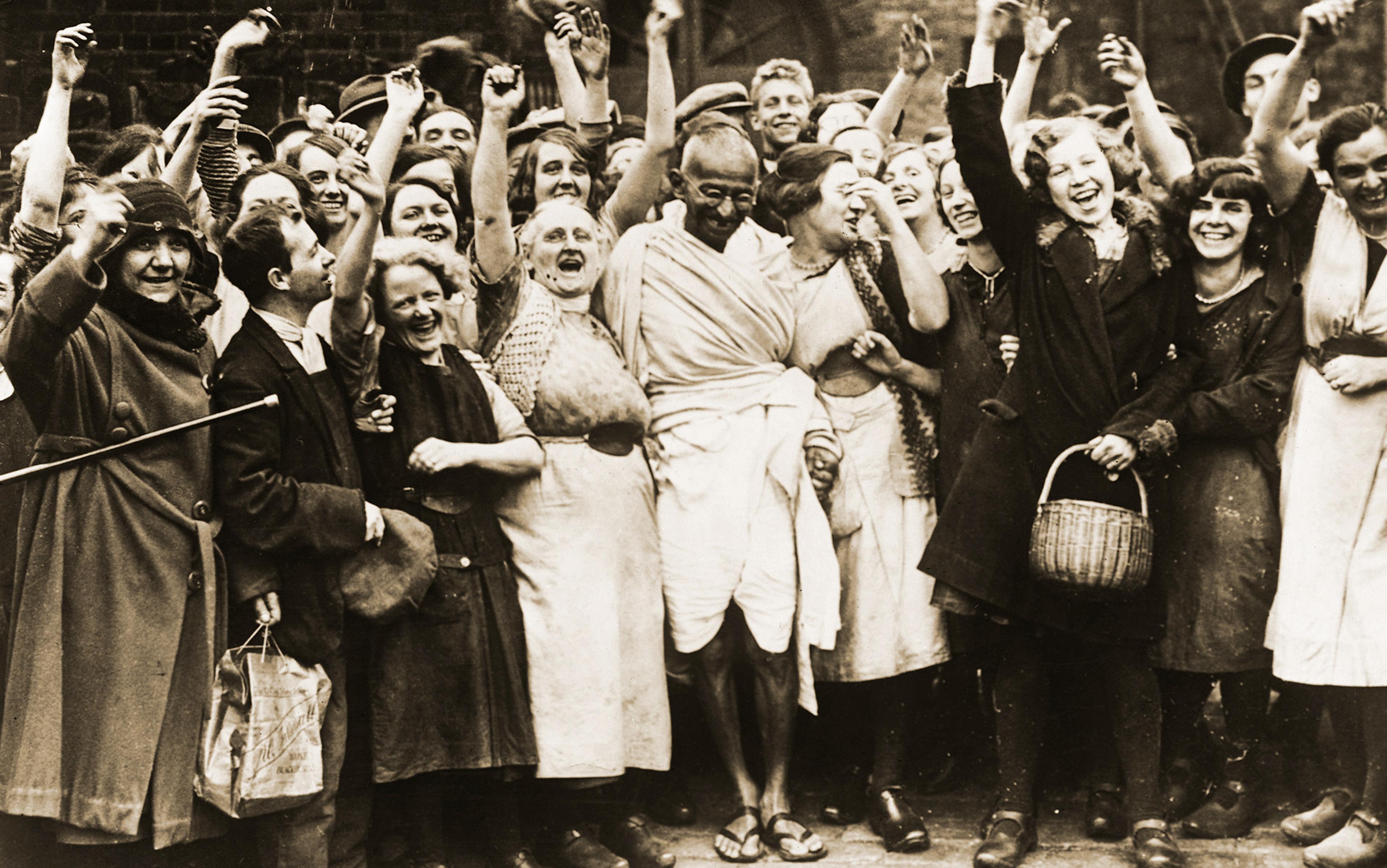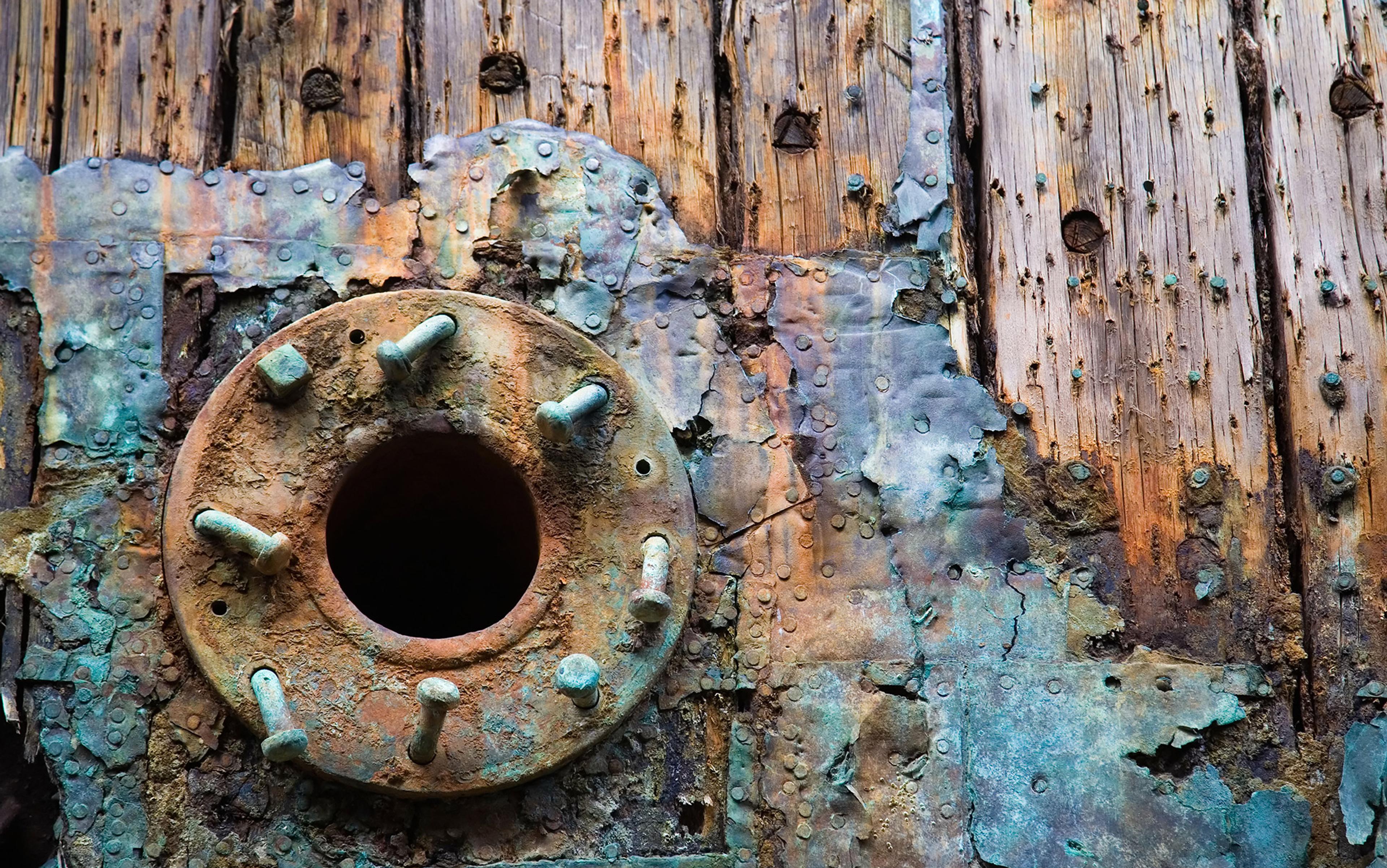In the mid-18th century, advanced areas of northwest Europe and east and south Asia enjoyed roughly comparable life expectancy, rates of consumption, and potential for economic growth. But around 1800, in what scholars call the ‘great divergence’, the power and wealth of the West suddenly and dramatically eclipsed that of India, China and the Ottoman Empire.
The British in particular found vindication for their expanding empire in ideas of cultural and racial superiority. Scholars from Edward Said to Kenneth Pomeranz have done much to discredit such theories and to reveal their importance in motivating and justifying British conquest in Asia. European colonialism in Asia and the New World itself helped to propel the divergence between Europe and Asia – securing European access to unprecedented riches and coercively secured markets and resources.
Still, some scholars continue to rummage through the vast terrain of ‘culture’ in search of an explanation for European ascendancy. Most influential of late is the theory (popularised especially by the economic historian Joel Mokyr) that the Enlightenment fostered a unique culture of sharing both the knowledge and the microinventions – or ‘tweaks’ – that drove the British industrial revolution.
The idea that knowledge-sharing was a particularly European trait would have surprised the Enlightenment thinker Adam Smith as he observed the world in that moment. Concerned about Britain’s aggressive pursuit of empire, he presumed that the universal capacity for knowledge-sharing would ultimately right the wrongs of colonialism. Noting in An Enquiry into the Nature and Causes of the Wealth of Nations (1776) that South Asians were not reaping benefits from the discovery of the Americas and suffered ‘every sort of injustice’ at the hands of Europeans, Smith remained sanguine that the sharing of knowledge and improvements that commerce produced would eventually put all nations on an equal footing and compel them into mutual respect.
We know that history did not play out that way. Why not? Why didn’t knowledge-sharing equalise the world? Was Smith too generous or naive in believing that it had cultural purchase beyond Europe? Smith’s naivety in fact lay in his presumption that the emerging political inequalities that he observed would not also shape the spread of knowledge. Like liberal thinkers today, he imagined that knowledge-exchange somehow transpires regardless of power relations.
In reality, in the 18th century, as now, power shaped knowledge-sharing everywhere. In Britain, for instance, government offices engaged in military supply often prohibited contractors from patenting their inventions: a patent would slow the spread of innovation to other contractors and thus slow the production of urgently needed supplies. While the British government thus abetted the sharing of know-how within Britain, it actively stifled such sharing abroad. British industrialists copied Asian textiles and pottery without scrupling over ‘intellectual property’, but could rely on their government to minimise the threat of colonial competition with their own manufactures.
In 1737, for instance, English iron manufacturers urged prohibition of bar-iron manufacturing in America, fearing that it would stimulate manufacture of iron goods there and ruin English ironworks and iron manufactures, depopulating the ‘Mother Country’. In 1750, they ensured that legislation allowing duty-free imports of American bar iron at once prohibited American iron-manufacturing, explicitly to prevent creation of a war machine there. Such inequities fuelled anti-British sentiment in America.
In India, old, rather than new, manufacturing industries caused concern. British colonial officials strove to strangle local gun-manufacture and block Indian access to British gun-making knowledge. They did so out of an understanding that arms-making lay at the heart of industrial progress. The result was South Asian dependence on British guns, fuelling Britain’s industrial take-off while undercutting India’s industrial potential.
Eighteenth-century Britons perceived the connection between war manufacturing and industrial development, especially in the West Midlands. In a 1752 petition, the West Midlands town of Birmingham boasted that ‘above 20,000 Hands’ were employed ‘in useful Manufactures, … greatly serviceable to the Government’. In 1795-96, an influential and powerful Quaker gun-maker of the town explained to his concerned fellow Quakers that there was no industrial work that did not in some way contribute to war.
Intensifying European involvement in Indian conflicts heightened demand for weapons
During the long wars against France unfolding then, military contracting dominated the town. The Ordnance Office took control of the arms industry, monopolising its output. From 1804 to 1815, Birmingham produced 7,660,229 arms and components. The town worked to quash any legislation threatening the gun trade. Townspeople knew that injury to arms manufactures would damage the entire West Midlands region, throwing a ‘considerable … portion of its population’ out of employment. The industrial downturn after the wars in 1815 confirmed their view. As late as 1857, opponents challenged John Bright’s parliamentary election bid on the grounds that his pacifism fit awkwardly in a town whose economy depended on the ‘paraphernalia of military metallic supplies’.
Similar regional military-industrial economies existed in the Indian subcontinent. In the 16th century, arms sales constituted part of Ottoman-Mughal diplomatic business in India. Babur, the first Mughal emperor, brought Turkish firearms, which Mughal adversaries, the Rajputs and the Afghans, in turn adopted. Exchanges with the Portuguese and Egypt helped to establish the technology in the subcontinent. The Mughal emperor Akbar was deeply interested in firearm manufacture, and drew master gun-makers to his court.
By the 17th century, the Mughals had state foundries and arsenals. From Malabar to Bihar, kingdoms across the subcontinent cultivated arms manufacture. Intensifying European involvement in Indian conflicts heightened demand for guns. Indian craftsmen also copied European firearms. Peasants of the Gangetic plains used cheap handguns made by local blacksmiths. Travancore, Kashmir, Rajasthan, Punjab and Sindh possessed sites of arms manufacture. Indian guns and gun parts were also sold in Persia, Oman and across the Indian Ocean. British military men noted the superior range and velocity of Indian matchlocks. European observers also praised Golconda muskets. Indian designs, the British recognised, were sophisticated and effective; subcontinental arms emerged from a rich and dynamic culture of technical knowledge.
The East India Company (EIC) – a commercial arm of the British state – also sold British arms in the Indian subcontinent. To obtain trading privileges, they also presented arms as gifts. By the 1690s, the company exported nearly 1,000 tons of small arms per year for profit. ‘Hardly a ship came [in the 1760s] that did not sell them cannon and small arms,’ marvelled a colonel in Parliament. The French and British used arms deals as a proxy to challenge one another in the subcontinent. With each British success, EIC arms acquired ever more cachet, making them an ever more effective medium of diplomatic exchange. In 1815, the Board of Customs reported an annual export of 151,572 guns to South Asia, the Indonesian archipelago and China worth £103,463.
To be sure, the British worried about arming their enemies. In 1765, for instance, the EIC’s Madras government urged steps to prevent arms from ‘falling into Hands who may turn them against Us’. The EIC also wanted to ensure that arms supplied to the trusted nawab (or governor) of Arcot did not reach ‘improper hands’. But short-term commercial interests often prevailed. Officials worrying about reckless sales confronted the logic that forbidding them would merely push custom to European rivals, forfeiting both British profit and influence. This was the calculus with respect to Hyder Ali of Mysore: the British felt that selling him guns brought both profit and his goodwill as he brought down their common enemies, the Marathas. He had access to French and Spanish guns anyway, they noted.
The EIC also bought British guns for its own use. As its territorial stake in India grew, it required massive gun shipments for its expanding professional army. In 1764, it anticipated an annual demand of 5,000. In 1765, Calcutta officials asked for 10,000 stand of arms plus 4,000 more each subsequent year, to be supplied by the same manufacturers who supplied the home government. The same year, the EIC acquired the right to collect taxes in Bengal, assuring its capacity to pay for arms. With both its own army and the right to collect taxes from colonial subjects, the EIC was becoming a colonial state.
When the American war started, it was difficult to lure Birmingham’s smiths away from all this Indian work
In 1766, the EIC’s Madras Council determined to provide a spare musket for each company soldier. They also needed 17,000 new arms, plus more for the nawab of Arcot. Before 1765, the EIC’s small arms expenses rose above £10,000 only three times, but after 1765, an annual outlay of £20,000 to £50,000 was the norm. In 1767 and 1769, payments were more than £60,000. Guns in the Indian climate required replacement three times as often as those in the King’s Service. The EIC was also extravagant, relative to the Ordnance Office, in its readiness to replace damaged arms. While the Ordnance Office ordered few guns in the brief interlude of peace in the early 1770s, EIC demand remained robust, partly as a result of design changes that consolidated the classic ‘India-pattern’ musket in 1771. That year, it wanted 40,000 muskets for Madras and more for the nawab of Arcot, Bengal, the nawab of Awadh, the Bombay Marine, and the king of Travancore. Thousands more went to short-lived militias formed from time to time around the subcontinent. When the American war started in 1775, the Ordnance Office had difficulty luring Birmingham’s smiths away from all this Indian work. After that war, too, the EIC routinely had at least 20,000 muskets en route to the subcontinent, in addition to maintaining 75,000 in store.
During the wars against France from 1793 to 1815, Britain’s Ordnance Office could not procure guns fast enough, and the EIC became a crucial arms supplier to the British state. By the end of 1794, the EIC handed over some 30,000 guns for use by other British forces around the world. The Indian army had enough British guns in store and on continual order to spare all this, even as its forces expanded from 88,000 in 1793 to 192,000 in 1805. By the end of the war, the Ordnance Office had bought more than 162,000 guns from the EIC.
The India-pattern guns were lighter and plainer in style than the standard Ordnance Office musket – making it more easily mass-produceable. Its adoption as the standard infantry weapon in 1797 revolutionised English arms production. Between 1804 and 1815, Birmingham produced more than 3 million barrels and gunlocks, plus another million for the EIC. More than 1.7 million complete arms were set up. The India-pattern was Britain’s most numerous military muzzle-loading weapon ever: more than 2.8 million were produced. During a slackening of demand in 1812, the company helped Midlands ironmasters by anticipating munitions orders for the next year and thus purchasing 4-5,000 tons of Midland iron. In short, Birmingham’s industrial transformation owed a great deal to the EIC and its imperial activities in India.
While facilitating industrial revolution at home, the EIC actively stifled industrial progress in India. It manufactured some military goods in its arsenals and purchased some locally made tents, swords and tulwars (sabres). Local manufacturers repaired guns. But the company drew the line at arms-manufacturing, out of fear of stimulating an industrial capacity that would threaten Britain and Britain’s hold on India.
Occasionally, a British official suggested that Indian manufacturing might offer efficiencies. In the 1770s, complaints about the quality of English arms prompted a suggestion to minimise importation of stores that could be manufactured in India. But the EIC’s Court of Directors dismissed the consequent proposal to manufacture drums and fifes in India. The EIC likewise rejected a proposal to develop lead, iron, copper and tin mining in Bengal on the grounds that it would cost the EIC profit and control. Any steps toward industrial development, the EIC noted, was to make the colony still more independent of the ‘Mother Country’. It also risked supporting the ‘supply to the neighbouring powers of Military Stores[,] and the teaching of them new means of independence and new Sources of Wealth’. In short, proposals that might promote industrial development in Bengal were ‘very impolitic and contrary to our government’s maxims’. Certainly, they might bring ‘great and important advantages’ to Bengal, ‘considered as independent’. But of course Bengal was not independent; it was part of the British Empire.
The richness of Bengal’s natural resources and technical knowledge presented a threat, from the EIC’s point of view, insofar as they might tend to industrial development in the region, and thus ‘occasion a heavy loss’ to British national interests. Bengalis, an official noted, ‘are not absolutely ignorant of the use of iron ore’. If other metal mines were opened, producing good metal more cheaply than European imports, ‘their curiosity and their avarice would be excited and they would at least proceed to experiment’. Like Adam Smith, this official knew that curiosity and experimentation were not components of some unique European culture.
As arms manufacture lay at the heart of progress, officials helped create the divergence between East and West
Colonial officials in particular feared that Indians would acquire knowledge leading to improved weapons-manufacturing. Facilitating or allowing the spread of knowledge of metalworking among South Asian colonials presented a simple danger. The ‘step from a knowledge of smelting Metals and the manner of casting them into certain forms to that of casting Cannon Shot and Shells is so inconsiderable that if the Natives once acquired the former art they would soon become Masters of the latter’, wrote a company official. The EIC’s leadership likewise insisted that its ammunition laboratories at Fort William remain a mystery:
No Indian, black or person of mixed breed, nor any Roman Catholic of what nation soever, shall, on any pretence, be admitted or set foot in the Laboratory or any of the military magazines, either out of curiosity or to be employed in them, or to come near them so as to see what is doing or contained therein.
This was the European culture of knowledge-sharing.
In 1813, the EIC considered closing the Fort William foundry out of fear that knowledge about casting might spread. Thus, while EIC arms purchases stimulated industrial revolution in England, the EIC prevented analogous stimulation of metalworking in the subcontinent, and took steps to counter it. EIC officials were sure that arms manufacture lay at the heart of industrial progress, and they helped create the divergence between East and West. In their ad hoc decisions lie the beginnings of global industrial disparities. That was what empire was about. As British industrialism took off, Indian economic development was reoriented to serve it.
Preventing exposure to British knowledge and suppressing Indian development was a big part of the battle, but the British also strove to suppress existing Indian knowledge and close down relationships in which other Europeans might share skills and knowledge with Indian states. It was a real concern. For, in the face of British aggression, indigenous polities were struggling to strengthen their gun-manufacturing capacities. In the early 1760s, the nawab of Bengal, Mir Qasim, began to manufacture firelocks at the fort at Monghyr, where Raja Todar Mal had manufactured guns in the 16th century.
The manufacturing continued after the nawab’s defeat in 1764, but as an EIC arms depot. Its guns enjoyed a reputation superior to the best British military muskets, especially in the barrel metal and flints made of agates from the Rajmahal Hills. As French fortunes declined in the second half of the century, French mercenaries offered their expertise to Indian manufactories. State arsenals and magazines across Agra, Delhi, Gwalior, the former Mughal heartland, produced munitions at the same standards as Europe. Factories in Lucknow, Pondicherry, Hyderabad, Lahore and Seringapatam produced most of the guns used by powers challenging both the Mughals and the British.
The British leveraged their military support to force the new nawab to dismiss the Frenchmen in his service
The EIC sold guns to defiant powers partly to inhibit these native strides in gun-manufacturing. In the late 1760s, the British repeatedly refused arms to the nawab of Awadh, Shuja-ud-Daula, and then watched anxiously as he began manufacturing them in Faizabad. Captain Richard Smith observed an excellent eight-pounder brass gun moulded from a Dutch model and nearly 1,000 new matchlocks with bayonets. Good firelocks were being made slowly. Two Bengalis directed casting of big guns, and a French engineer made carriages and mounted them and trained workers to use a boring machine. He had a plan for a furnace, too. Motivated by Shuja’s reviving ambitions, the British asserted greater control in Awadh appointing, in 1773, a resident to Lucknow. They also supplied Shuja with 2,000 muskets.
Shuja died in 1775, and in the vulnerable moment of succession, the EIC secured a monopoly of Awadh’s plentiful saltpeter, the primary ingredient in gunpowder. The British then leveraged their military support and a promise of arms to force Asaf-ud-Daula, the new nawab, to dismiss the Frenchmen in his service. For this, Asaf received 5,000 EIC guns – repaired by his armorers, at his expense. The EIC sold Asaf 14,000 guns for company battalions stationed in his territory. Soon, some of Asaf’s own troops were transferred to EIC service. With all these measures, the EIC co-opted Awadhi military strength – and Awadhi gun-manufacture. Asaf was permitted to construct an arsenal in the new capital, Lucknow, but it made guns modelled on British guns, and an EIC man served as the factory superintendent.
In 1784, a French mercenary bought arms there for the Maratha leader Mahadji Scindia. By the time the superintendent retired in 1787, the EIC had depots up-country and no longer needed the Lucknow armory or Asaf’s troops. It put a final stop to Awadhi gun manufacture, officially prohibiting Europeans from making and selling arms for native rulers. Asaf remained fascinated by arms, amassing an enormous personal collection.
Mysore saw the same story of British proprietary control of technical knowledge and suppression of native industry. Following the Second Anglo-Mysore War in 1780, the EIC grew wary of selling Hyder Ali guns. Hyder Ali put up 20 iron-smelting furnaces in Mysore. Upon his death in 1782, his son Tipu Sultan built gun manufactories emulating European techniques. French observers considered Mysore’s cannon and firearms equal to the best European arms of the time. Indeed, Tipu returned French guns that he found inferior to his own. His workshops included a boring machine adapted to bullock power rather than a waterwheel – an impressive feat of craftsmanship.
After the British defeated and killed Tipu in 1799, they shut down his manufactories. Company arms again flowed into Mysore, ruled by a new, pro-British monarchy. Tipu’s weapons became European collectors’ prizes. William Congreve, controller of the Royal Laboratory at Woolwich, experimented with Mysorean rockets, which had been used effectively against the British. The experiments led to the manufacture of rockets with iron tubes for British forces. Indian technical knowledge was shared in the networks of Britain’s industrial enlightenment, even as Indians were excluded from those networks.
The crushing of indigenous arms manufacture was essential to British colonisation
The British also turned to close down knowledge networks and industry in the Maratha empire. By 1785, Scindia had ordnance factories in the Agra area. Maratha military culture derived from an elaborate military economy like that of Birmingham’s, in which skilled metalsmiths might as easily craft temple ornaments as artillery. In Maratha towns, metalworkers and wheelwrights might make parts for bullock carts or artillery. As in the West Midlands, the whole regional economy profited from defence contracts. Scindia had high-quality flintlocks made locally. One mercenary described them as ‘very excellent … far superior to the ordinary Europe arms’. Maratha small arms were better suited to the climate and local gunpowder; Maratha cannon combined iron and brass exteriors in an ingenious manner that made them lighter and more durable than British versions. British military observers admired the elevating screw used in larger cannon, which permitted ‘a certain amount of interchangeability’.
Scindia bought surplus British guns from the Third Anglo-Mysore War, in 1792. Despite British efforts to dismantle condemned guns before auctioning them off for use in the manufacture of nails and bolts, he rebuilt decommissioned EIC guns. The clandestine smuggling chain involved in this project included Indians and Europeans. The Marathas sought condemned EIC arms despite having their own manufacturing capacity; they did so because possession of guns was about confidence as much as firepower, and such was the cachet of British arms.
After victory against the Marathas in 1805, the British wasted no time in crushing Maratha artillery-manufacturing and taking control of Maratha small-arms manufacturing. Bengal, Mysore and Maratha are just three of many places in the Indian subcontinent where Britain at great expense and effort restricted, curtailed or closed down knowledge and capacity for arms manufacturing in India. The near parity between India and Britain in small arms made British conquest of the subcontinent slow, costly and difficult, and made the crushing of indigenous arms manufacture essential.
Perhaps many polities had the potential for industrial growth, but imperial ambition, generating military commitments requiring mass levels of supply, ensured that Britain became the site of industrial take-off – and a global arms depot. In addition to its geological and geographical advantages, Britain had coercive colonial policies enabling jealous control of know-how. Eighteenth-century Britons believed in the government’s right and obligation to use its might to promote industrial prosperity at home and strangle it abroad. We too must recognise the way that war shaped the entwined industrial fates of Britain and its colonies, and the way that power always shapes knowledge-sharing.
